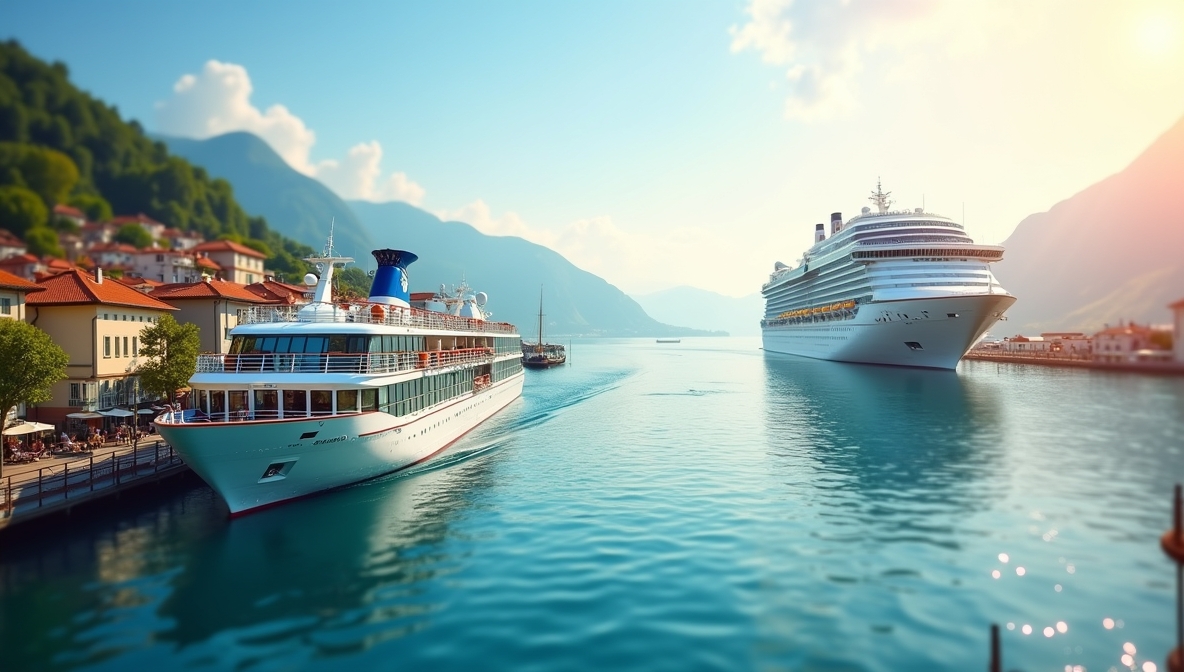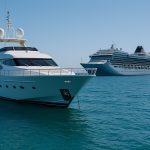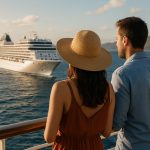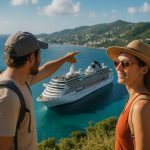Choosing between a river cruise and an ocean cruise depends on your travel preferences. If you enjoy a relaxed atmosphere, cultural immersion, and scenic landscapes, a river cruise may be the best fit. If you prefer a larger ship with extensive entertainment, diverse dining options, and the opportunity to visit multiple countries, an ocean cruise offers more variety.
Understanding the differences between these two experiences can help make the right decision.
Ship Size and Atmosphere
River Cruises: Small and Intimate
River cruise ships are much smaller than their ocean-going counterparts, typically accommodating between 100 and 200 passengers. This smaller scale creates a more personal atmosphere with fewer crowds. Since these ships navigate inland waterways, they are designed for comfort rather than grandeur. The focus leans towards relaxation, cultural experiences, and scenic views.
Ocean Cruises: Large and Lively
Ocean cruise ships range from mid-sized vessels with a few hundred passengers to massive floating cities that carry thousands. These ships feature multiple decks, numerous dining options, pools, theaters, and casinos. With more passengers, the environment is livelier, catering to travelers who enjoy a vibrant social setting.
Destinations and Itineraries
River Cruises: Cultural Immersion
River cruises navigate through historic towns, villages, and major cultural centers. Many itineraries include stops in iconic cities such as Paris, Vienna, and Budapest, allowing passengers to experience local traditions and cuisine. Since distances between ports are shorter, there are fewer sea days, and excursions are often within walking distance of the ship.
Ocean Cruises: Expansive Journeys
Ocean cruises span vast distances, stopping at major ports around the world. Itineraries range from island-hopping in the Caribbean to crossing the Atlantic. Many ocean cruises include multiple sea days, giving passengers time to enjoy onboard amenities. Shore excursions often require longer transfers but offer access to a wider range of destinations.
Onboard Experience
Entertainment and Activities
- River Cruises: Entertainment focuses on enrichment programs such as guest lectures, cooking demonstrations, and classical music performances. The emphasis is on relaxation and cultural education rather than large-scale productions.
- Ocean Cruises: Options include Broadway-style shows, live music, comedy clubs, casinos, fitness centers, and water parks. There is a wider selection of activities to suit different interests.
Dining Options
- River Cruises: Menus highlight regional specialties, often featuring locally sourced ingredients. Dining is typically more intimate, with a single main restaurant serving gourmet meals.
- Ocean Cruises: Offer a mix of buffet-style dining, specialty restaurants, and high-end cuisine. Some ships have celebrity chef collaborations or themed dining experiences.
Seasickness and Stability
- River Cruises: The calm waters of rivers mean little to no motion, making seasickness unlikely.
- Ocean Cruises: Open waters can lead to more movement, particularly in rough seas. Choosing a mid-ship cabin on a lower deck can help minimize motion.
Cabin Choices and Comfort
River Cruises: Functional Luxury
Cabins are designed for efficiency, with large windows or balconies offering scenic views. Most river cruise ships lack interior rooms, ensuring every guest enjoys natural light and a view of the surroundings.
Ocean Cruises: Variety of Options
Cabins range from budget-friendly interior rooms with no windows to expansive suites with private balconies. Passengers can select accommodations that match their budget and preferences, whether they seek affordability or luxury.
Excursions and Shore Time
River Cruises: More Time in Port
River cruises dock in city centers, making it easy to step off the ship and start exploring. Most excursions are included in the fare and focus on history, architecture, and local culture.
Ocean Cruises: Diverse Excursion Options
Ocean cruises offer a mix of guided tours, adventure activities, and independent exploration. Some excursions may involve long transfers, particularly in larger ports where ships dock further from major attractions.
Cost and Value
River Cruises: More Inclusive Pricing
Fares generally include meals, drinks, and excursions. While the initial cost may be higher, fewer add-ons mean a more predictable budget.
Ocean Cruises: Flexible Pricing
Base fares tend to be lower, but additional costs for excursions, specialty dining, and onboard activities can add up. Budget-conscious travelers can find affordable options, while luxury seekers can opt for high-end experiences.
Pros and Cons
River Cruises
Pros:
- Smaller ships with a relaxed atmosphere
- Cultural experiences with longer port stays
- Calm waters with minimal seasickness
- More inclusive pricing structure
Cons:
- Fewer onboard amenities
- Potential for water level issues affecting itineraries
- Limited nightlife and entertainment
Ocean Cruises
Pros:
- Larger variety of entertainment and activities
- More dining options
- Opportunities to visit multiple countries
- Suitable for families and groups with diverse interests
Cons:
- Larger crowds and busier environments
- Shorter time in each port
- Higher likelihood of seasickness
- Additional costs for excursions and premium services
Making the Choice
- Choose a river cruise if you value cultural experiences, smaller crowds, and scenic waterways.
- Opt for an ocean cruise if you enjoy entertainment, diverse dining, and a range of destinations.
Each offers a unique way to travel, so the right choice depends on personal preferences and travel goals.



